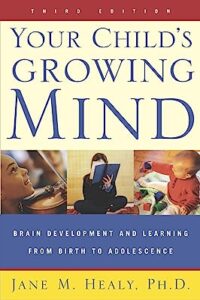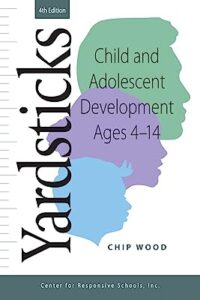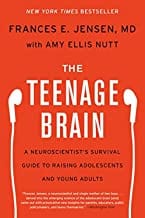Child Development and Ages & Stages
These books provide parents with an understanding of child development from infancy to adolescence and provide suggestions for fostering healthy development.

Ages and Stages: A Parent's Guide to Normal Childhood Development
A comprehensive parent's guide to your child's psychologicaldevelopment from birth through age 10 Written in an engaging,practical style, Ages and Stages offers you the benefits of themost current research on child development, featuring helpful tipsand techniques to foster your child's maturation. Charles Schaeferand Theresa Foy DiGeronimo tell you what behaviors you can expectas your child grows and how you can help him or her to advance tothe next level of development. They include numerous examples,stories, and activities you can use immediately to positivelyinfluence your child's development.
The book's structure (divided into four stages of child development--birth to 18 months, 18 to 36months, 36 months to age six, and six to ten years) allows you to monitor your child's progress, identify the reasons for emotional and psychological differences in siblings, and even determine how your parenting strategies should change as your child grows.
* Covers all five areas of psychological health--emotional,cognitive, friendship/relationships, personal growth, andmorality
* Filled with easy-to-follow Do's and Don'ts, plus fun activitiesand exercises to encourage your child's development
* Helps you assess if and when your child may need professionalintervention.

Your Child's Growing Mind: Brain Development and Learning From Birth to Adolescence
Hailed by parents and educators, Your Child’s Growing Mind is a window into the fascinating process of brain development and learning. It looks at the roots of emotion, intelligence, and creativity, translating the most current scientific research into practical suggestions for parents and teachers.
Dr. Healy also addresses academic learning, offering countless suggestions for how parents can help without pushing. She explains the building blocks of reading, writing, spelling, and mathematics and shows how to help youngsters of all ages develop motivation, attention, critical thinking, and problem-solving skills.
Using the science of childhood development, she also examines today’s hot issues, including learning disabilities, ADHD, influences of electronic media, and the hazards of forced early learning. From infancy to adolescence, this is the perfect guide to helping and enjoying a youngster’s mental, personal, and academic growth.

Yardsticks: Child and Adolescent Development Ages 4 - 14
Drawing on decades of educational experience and a wealth of research, Yardsticks invites every adult who teaches or cares for children to celebrate the incredible developmental journey that occurs from ages four through fourteen. Combining easy-to-access information about the cognitive, social-emotional, and physical characteristics unique to each age with practical advice for how to apply this knowledge, Yardsticks offers parents and educators a foundation for helping children grow and thrive.
New in the Fourth Edition
Updated and streamlined design that makes the text easier to use as a reference
Revised introductory material with practical advice for getting to know and understand children
Each age now enhanced with information specifically for parents
New age-by-age narratives that highlight what s intriguing, delightful, and sometimes challenging about children at each age.

The Teenage Brain: A Neuroscientist's Survival Guide to Raising Adolescents and Young Adults
In The Teenage Brain, Dr. Jensen brings to readers the astonishing findings that previously remained buried in academic journals.
Samples of some of the most recent findings include:
Teens are better learners than adults because their brain cells more readily "build" memories. But this heightened adaptability can be hijacked by addiction, and the adolescent brain can become addicted more strongly and for a longer duration than the adult brain.
Studies show that girls' brains are a full two years more mature than boys' brains in the mid-teens, possibly explaining differences seen in the classroom and in social behavior.
Adolescents may not be as resilient to the effects of drugs as we thought. Recent experimental and human studies show that the occasional use of marijuana, for instance, can cause lingering memory problems even days after smoking, and that long-term use of pot impacts later adulthood IQ.
Multi-tasking causes divided attention and has been shown to reduce learning ability in the teenage brain. Multi-tasking also has some addictive qualities, which may result in habitual short attention in teenagers.
Emotionally stressful situations may impact the adolescent more than it would affect the adult: stress can have permanent effects on mental health and can to lead to higher risk of developing neuropsychiatric disorders such as depression.
Dr. Jensen gathers what we’ve discovered about adolescent brain function, wiring, and capacity and explains the science in the contexts of everyday learning and multitasking, stress and memory, sleep, addiction, and decision-making. In this groundbreaking yet accessible book, these findings also yield practical suggestions that will help adults and teenagers negotiate the mysterious world of adolescent development.

As an Amazon Associate we earn from qualifying purchases.

